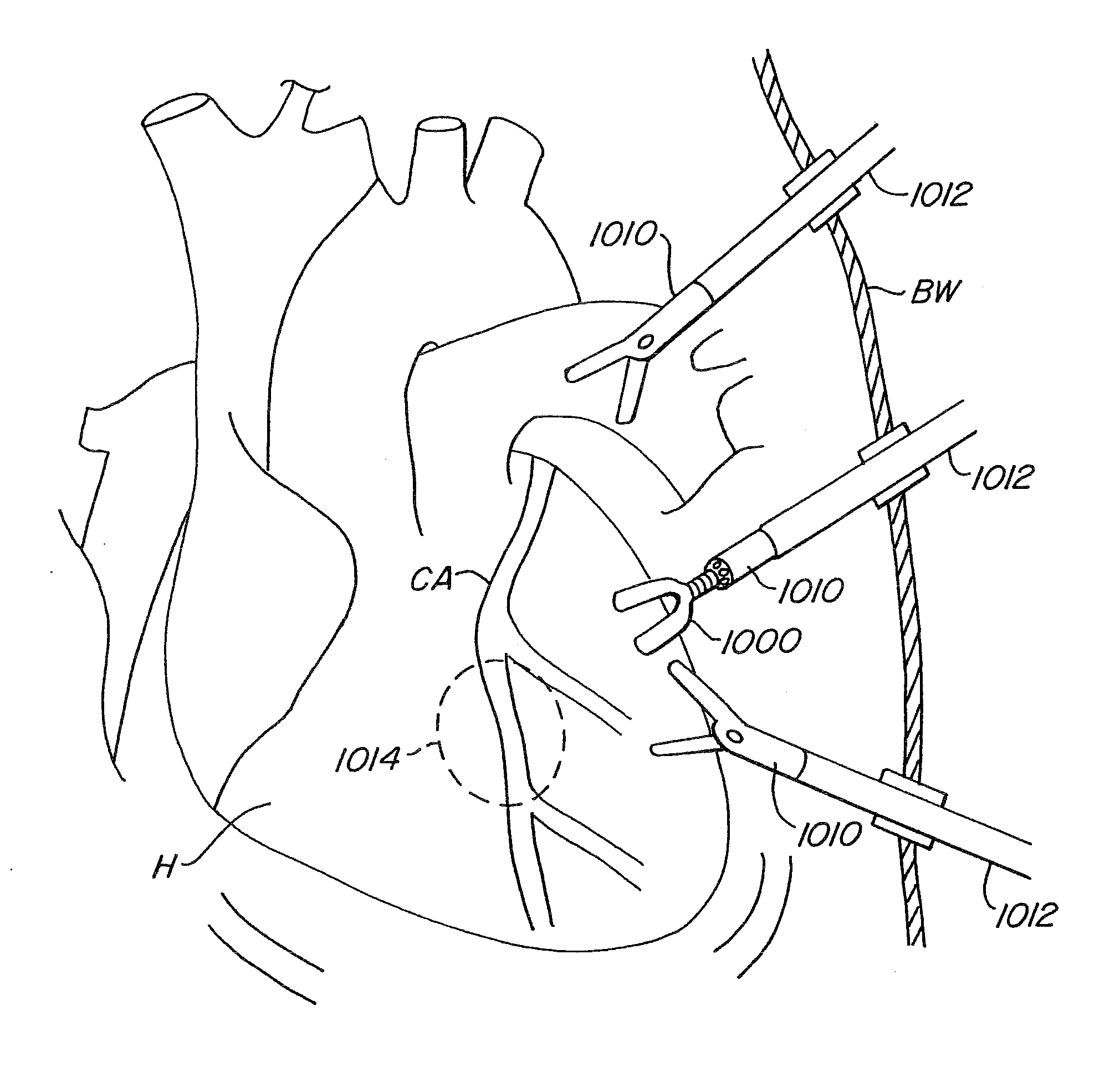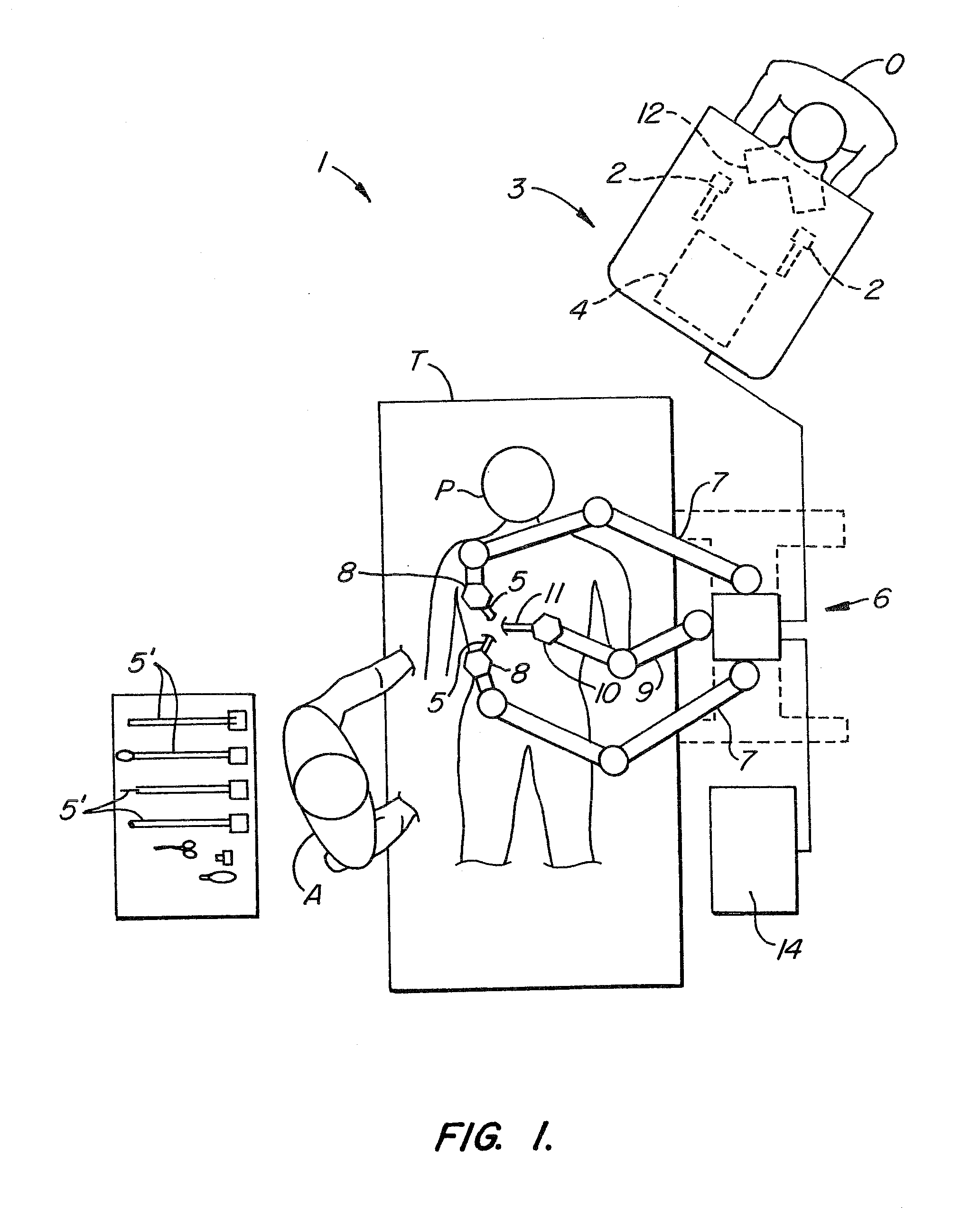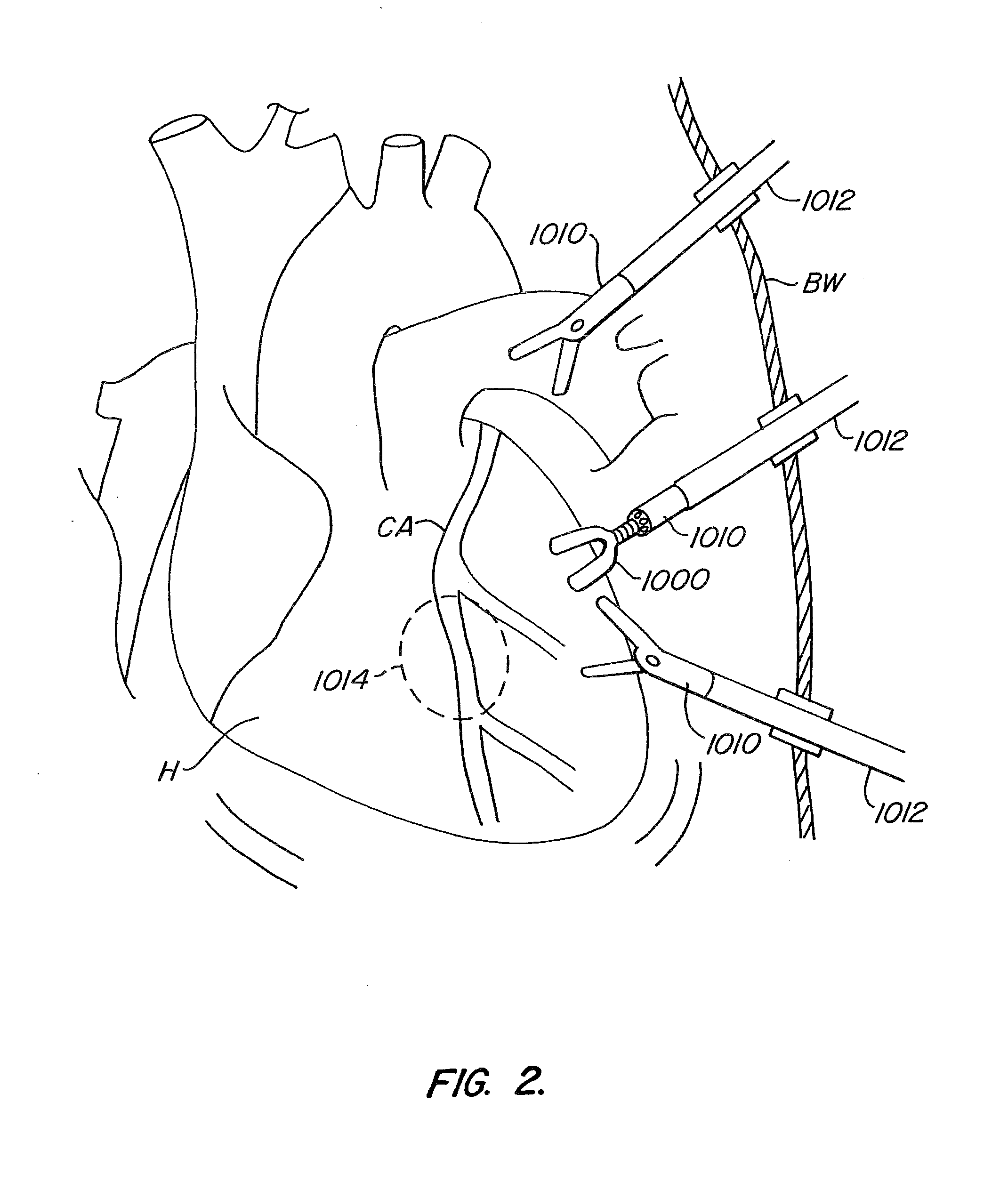Endoscopic beating-heart stabilizer and vessel occlusion fastener
a technology of endoscopic beating and heart valve, which is applied in the direction of surgical instrument support, application, surgical forceps, etc., can solve the problems of coronary artery disease, cpb use, and associated use of cpb in conventional cabg procedures, so as to reduce physiological motion of the stabilized region and stabilize the tissue
- Summary
- Abstract
- Description
- Claims
- Application Information
AI Technical Summary
Benefits of technology
Problems solved by technology
Method used
Image
Examples
embodiment # 1
Additional Embodiment #1
[0146]FIG. 23 illustrates a first additional embodiment of the stabilizer. FIG. 23 provides a perspective over-all view of the stabilizer 15, which includes the elongate shaft 16 and stabilizer distal portion or foot 17. Again, the foot 17 comprises the jointed portion or ankle 18 connected with the pair of stabilizer bodies or toe portions 19. Also, the toe portions 19 are actuated and locked in a selected deployment position by the tension cable 20. Each toe 19 in turn mounts on of a pair of stabilizing surface or tissue engaging members 22, 22.
[0147] In this embodiment, the stabilizer 15 includes an adjustable cable tensioner 23, which comprises an internally threaded manual knob 24 engaging an externally threaded proximal cable junction 26. The knob 24 bears on a thrust bearing 28 which is mounted to the base of a proximal shaft housing 30. The cable 20 may be adjustably tensioned by turning the knob 24 to retract cable 20 until a selected tension is rea...
embodiment # 2
Additional Embodiment #2
[0165]FIG. 30 illustrates a second additional embodiment of the stabilizer. FIG. 30 is a perspective view showing the distal end of shaft 91 of the stabilizer 90. An attached foot portion 92 is comprised of stabilizing surfaces 93, 93′ which are supported by toe portions 94, 94′, respectively. The toe portions 94, 94′ are joined by a split ball mounting 96 which functions in a manner similar to the spherical split ball shell 1041, 1048 previously described. The split ball mounting 96 allows the toe portions 94, 94′ to rotate from the furled or stowed configuration to an open or deployed configuration. The shaft 91 rigidly connects to a joint socket housing 98 which encloses and mounts split ball 96 at its distal end. FIG. 31 is a top view of the stabilizer 90 distal end and FIG. 32 is a side view of the stabilizer 90 distal end.
[0166]FIG. 33 shows stabilizer 90 with the toe portions 94, 94′ and the stabilizing surfaces 93, 93′ rotated outwards by the split b...
embodiment # 3
Additional Embodiment #3
[0171]FIG. 37 is a section plan view of an additional embodiment of a foot 130 of the stabilizer. As shown in this embodiment, the foot 130 comprises an ankle 18 and toes 19. The ankle 18 comprises a series of balls 36 and intermediate socket rings 37, of which only one is shown, connected with a housing 2000. Seals 2002 may be present between the balls 36 and socket rings 37 and between the ball 36 and housing 2000. The cable 20 enters the housing 2000 and connects with the toes 19 by connector cables 21. The cable 20 and connector cables 21 are joined with a cable crimp 2002. A push rod 2004 is disposed within each toe 19 and is engageable with a diamond dust ball link 2006. Each link 2006 is attached to a stabilizing surface or tissue engaging member 22. In addition, a vacuum or irrigation line 2008 is disposed within each toe 19 as shown. The principles of function and construction are generally similar to the Additional Embodiment #1.
PUM
 Login to View More
Login to View More Abstract
Description
Claims
Application Information
 Login to View More
Login to View More - R&D
- Intellectual Property
- Life Sciences
- Materials
- Tech Scout
- Unparalleled Data Quality
- Higher Quality Content
- 60% Fewer Hallucinations
Browse by: Latest US Patents, China's latest patents, Technical Efficacy Thesaurus, Application Domain, Technology Topic, Popular Technical Reports.
© 2025 PatSnap. All rights reserved.Legal|Privacy policy|Modern Slavery Act Transparency Statement|Sitemap|About US| Contact US: help@patsnap.com



